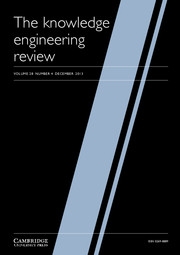Crossref Citations
This article has been cited by the following publications. This list is generated based on data provided by Crossref.
King, L.
2002.
The relationship between scene and eye movements.
p.
1829.
do Carmo Nicoletti, Maria
Bertini, João R.
Elizondo, David
Franco, Leonardo
and
Jerez, José M.
2009.
Constructive Neural Networks.
Vol. 258,
Issue. ,
p.
1.
Akiner, Muhammed Ernur
and
Akkoyunlu, Atilla
2012.
Modeling and forecasting river flow rate from the Melen Watershed, Turkey.
Journal of Hydrology,
Vol. 456-457,
Issue. ,
p.
121.
Xu, Pengcheng
Chen, Can
Chen, Shuizhou
Lu, Wencong
Qian, Quan
and
Zeng, Yi
2022.
Machine Learning-Assisted Design of Yttria-Stabilized Zirconia Thermal Barrier Coatings with High Bonding Strength.
ACS Omega,
Vol. 7,
Issue. 24,
p.
21052.
Xu, Pengcheng
Lu, Tian
Ji, Xiaobo
Li, Minjie
and
Lu, Wencong
2023.
Machine Learning Combined with Weighted Voting Regression and Proactive Searching Progress to Discover ABO3-δ Perovskites with High Oxide Ionic Conductivity.
The Journal of Physical Chemistry C,
Vol. 127,
Issue. 34,
p.
17096.

